 |
|||||||||




 |
|||||||||




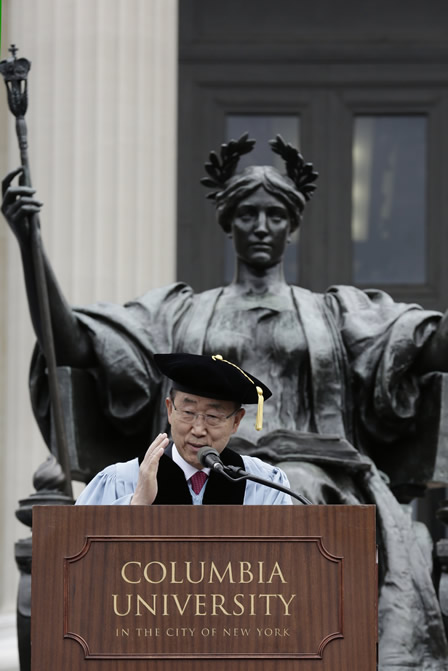
Photo: United Nations Secretary-General Ban Ki-moon speaks at the Columbia University Commencement Ceremony, where he urged students to use their passion and compassion to help build a world in which all people enjoy dignity and peace. 18 May 2016. New York, United States. UN Photo/Evan Schneider.
|GlobalGiants.Com|
Edited & Posted by the Editor | 2:18 PM | View the original post
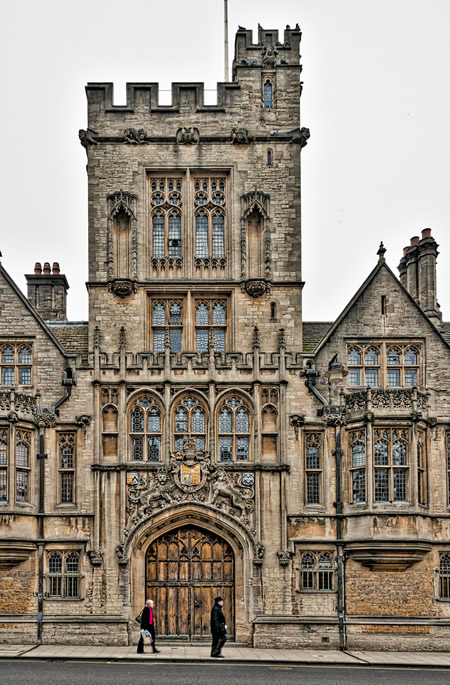
Photo: Brasenose College, University of Oxford, United Kingdom (founded 1509). Image Credit: David Nicholls.
This year’s Times Higher Education (THE) World Reputation Rankings see Harvard University take the top spot for the sixth consecutive year. The other top four positions are taken up by Massachusetts Institute of Technology, Stanford University, University of Cambridge and University of Oxford.
Launched in 2011, THE World Reputation Rankings offer a definitive list of the world’s most prestigious universities based on their global reputation.
United States has once again dominated the rankings, boasting of 43 institutions amongst the top 100.
US is loosely followed by the UK, which houses 10 universities that made it to the list, along with the University of Cambridge and the University of Oxford taking the fourth and fifth spots, respectively.
From Asia, there were 17 institutions included in the list, a rise of seven from 10 last year. With Japan’s University of Tokyo standing at the 12th place, China’s Tsinghua University and Peking University were ranked 18th and 21st, respectively.
• India continues to be one of the few nations not to have featured even once in the list.
According to Phil Baty, Times Higher Education rankings editor, “Reputation is the global currency of higher education”.
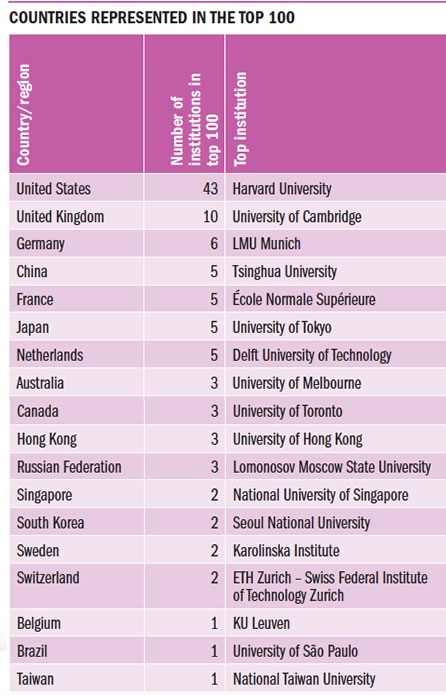
World’s Most Prestigious Universities 2016
Top 50
51-60
61-70
71-80
81-90
91-100
• Reputation Ranking is distinct from Academic Ranking.
The Times Higher Education World Reputation Rankings list the world’s top 100 universities based purely on their Academic Prestige as distinct from their Academic Performance.
According to THE rankings editor Phil Baty, “A university’s reputation for academic excellence is absolutely vital to its success.”
A university’s brand - crucial in helping to attract students, staff and funding - is built on esteem.
Reputation and brand are not the same thing. But Pat Freeland-Small, chief marketing officer at the University of Melbourne, says the former feeds the latter.
The world elite of universities, he says, do not need to advertise, “but in a way they are advertising. They are constantly communicating the quality of what they do through their people and what they naturally put out…It is their people, their quality of research - notions that come through the academic community - that advertise their international profile.”
— EDITOR
|GlobalGiants.Com|
Edited & Posted by the Editor | 4:46 AM | View the original post
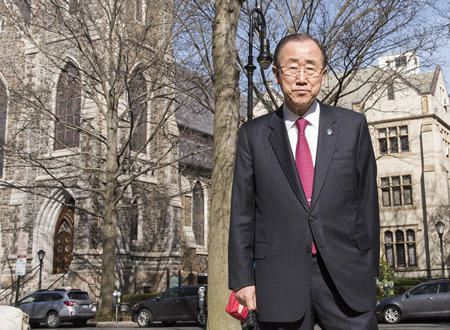
Photo: UN Secretary-General Ban Ki-moon at Yale University in New Haven, Connecticut, where he addressed the “Global Colloquium of University Presidents” on the topic “Preservation of Cultural Heritage: Challenges and Strategies”. 12 April 2016. New Haven, United States. UN Photo/Mark Garten.
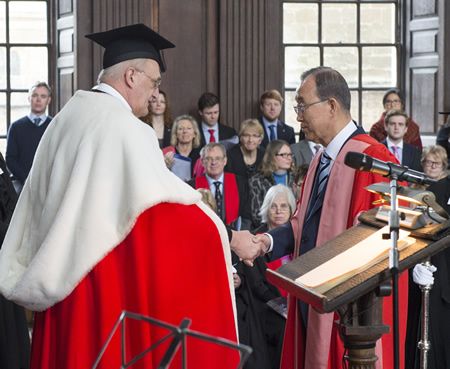
Photo: UN Secretary-General Ban Ki-moon (centre right) with Professor Sir Leszek Borysiewicz, Vice-Chancellor of the University of Cambridge, during a ceremony where he received an honorary degree of Doctor of Law from the University of Cambridge in recognition of his humanitarian work, support for women’s rights, and achievements in pursuit of global peace and security. 03 February 2016. Cambridge, United Kingdom. UN Photo/Eskinder Debebe.
28 April 2016 - United Nations Secretary-General Ban Ki-moon and Director-General Irina Bokova of the UN Educational Scientific and Cultural Organization (UNESCO) have appointed 12 new members to the governing UN University (UNU) Council.
The new appointees, who will take office as of 3 May, replace the outgoing 2010-2016 cohort of UNU Council members and will serve for terms of either three or six years.
The main functions of the Council are to formulate the principles and policies of the UNU, govern its operations, and consider and approve its biennial budget and work programme.
Appointed members of the UNU Council serve in their individual capacity - not as representatives of their country’s Government - and are selected with the aim of achieving a geographic and gender balance, with due regard for major academic, scientific, educational and cultural trends, as well as each member’s fields of expertise.
The new members of the UNU Council are:
|GlobalGiants.Com|
“Education is the leading of human souls to what is best, and making what is best out of them.”
“The first duty of government is to see that people have food, fuel, and clothes. The second, that they have means of moral and intellectual education.”
“Modern education has devoted itself to the teaching of impudence, and then we complain that we can no longer control our mobs.”
— JOHN RUSKIN.
Edited & Posted by the Editor | 5:21 AM | View the original post
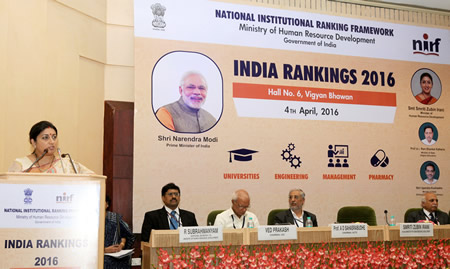
Photo: India’s Minister for Human Resource Development, Smriti Irani, addressing the gathering at the release of the India Ranking Report 2016, in New Delhi, on April 04, 2016. India Rankings 2016 is a first-of-its-kind indigenous survey of India’s higher educational institutions commissioned by the Union Human Resource Development Ministry. Image provided by the Press Information Bureau, Government of India.
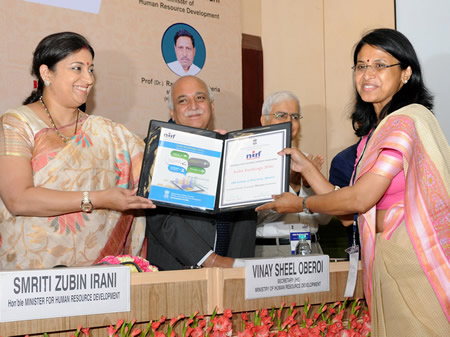
Photo: India’s Minister for Human Resource Development, Smriti Irani, releasing the India Rankings 2016, at a function, in New Delhi, on April 04, 2016. India Rankings 2016 is a first-of-its-kind indigenous survey of India’s higher educational institutions commissioned by the Union Human Resource Development Ministry. Image provided by the Press Information Bureau, Government of India.
Indian Union Minister of Human Resource Development, Smriti Zubin Irani, released the India Rankings 2016 and dedicated India’s first ranking to the nation in New Delhi today. While releasing the India Rankings 2016 she said that history has been made as National Institutional Ranking framework (NIRF) is the first of its kind. She said that one of the biggest challenges in the higher education sector have been that citizens who engage with these institutions feel that there is no level playing field in terms of transparency and the data that they need from these institutions with regard to the choices they, specially the students, need to make. The Ministry of HRD, she said, has been able to spearhead many a changes in the field of education sector and slowly and steadily the steps taken by the Ministry are bearing fruits.
The Minister said this kind of ranking would empower citizens as it would endow them with the power as to how they observe the institutions to be. Some 60000 observers gave their views about how our present institutions are. She added that these rankings would also help in reaching benchmark of international excellence. The rankings will also help students make informed choices about the institutions they want to join. The Minister added that to ensure a third party validation of the data that we have received and analyzed, the agency like Elsevier was engaged.
India Rankings 2016 is the country’s first exercise to rank the higher educational institutions in the country based on objective, identifiable parameters. This follows the launch of National Institutional Ranking Framework (NIRF) on 29th September, 2015.
The rankings are arrived at after detailed analysis and validation of the data submitted by more than 3,600 higher educational institutions in the country classified in 6 categories. These ranking follow an Indian approach, where academic institute will be assessed on parameters, including teaching-learning; research; collaborative practice and professional performance; graduate outcomes; placements; outreach and inclusive action and peer group perception. Each of these has been further subdivided into nearly 20 sub criteria to comprehensively assess an institution.
The rankings are a step towards bringing the Indian institutes on a global platform.
#IndiaRankings2016 Top Ten Institutions - Indian Rankings 2016 - University https://t.co/C3jRy3fVXS
— Global Giants (@GlobalGiants) April 4, 2016
Top Ten Institutions
|GlobalGiants.Com|
Edited & Posted by the Editor | 5:47 AM | View the original post
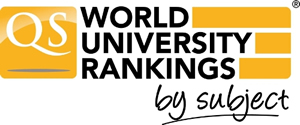

Photo: Harvard Bookstore, Harvard Square, Cambridge, Massachusetts. A privately-owned, independent bookstore serving the university and neighbourhood community since 1932. Image Credit & Copyright © ChenYen.Lai.
QS World University Rankings by Subject 2016: What's new? https://t.co/6WoXoJDLxG
— Global Giants (@GlobalGiants) March 25, 2016
The sixth edition of the QS World University Rankings by Subject, released today features a record-breaking 42 disciplines, making it the largest-ever ranking of its kind.
The expert opinion of 76,798 academics and 44,426 employers contributed to the results, alongside the analysis of 28.5 million research papers and over 113 million citations sourced from the Scopus/Elsevier bibliometric database.
Harvard and MIT continue to take the lion’s share of top places, leading in twelve subjects each. Sixteen different institutions top at least one of the subjects.
In the six new disciplines ranked, Harvard leads Anthropology and Social Policy and Administration while Cambridge leads Archaeology. Juilliard tops Performing Arts. Colorado School of Mines tops Mineral Engineering while University of Pennsylvania leads Nursing.
Following universities have achieved the most placements within the top-ten:
Ben Sowter, Head of the QS Intelligence Unit, said: “Though US and UK remain dominant, our most inclusive rankings yet show that excellence can be found in an ever-increasing number of places. Nations like Austria, Finland, South Africa, Brazil, and China, can be found in the top ten of our tables. Our new top 100 for Performing Arts acknowledges academic excellence in 27 different countries, while our top 200 for Business & Management recognizes it in 33.”
In continental Europe the countries with highest number of placements among the top-ten are: Switzerland (11), Netherlands (8), Sweden (6), France (3) and Italy (2). In Asia-Pacific: Singapore (15), Australia (9), Japan (7), Hong Kong (6), Mainland China (5).
Brazil dominates Latin America, with Universidade de Sao Paulo ranking 9th for Dentistry. South Africa leads its continent with Cape Town University 9th in Development Studies.
In the Middle East, the top performing country is Saudi Arabia, with KFUPM, ranked 46= in Mineral Engineering.
|GlobalGiants.Com|
Edited & Posted by the Editor | 4:06 AM | View the original post
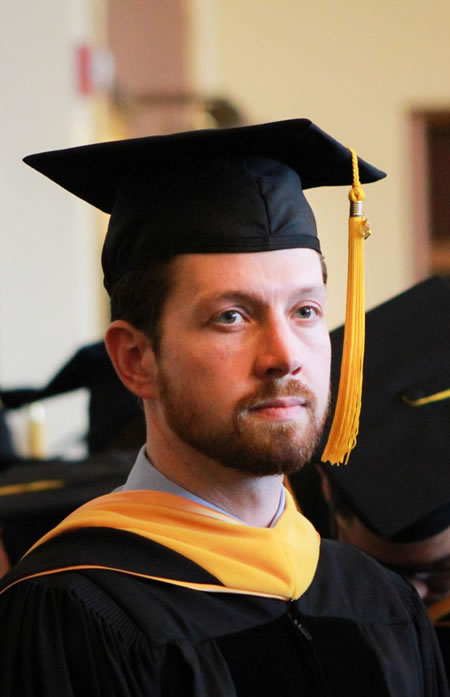
Photo: University of Michigan Commencement 2015. Image Credit & Copyright © University of Michigan.
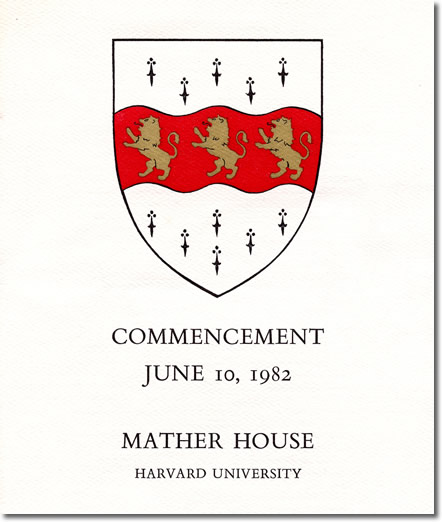
Photo: Harvard University Commencement 1982, Cambridge, Massachusetts. Harvard University has replaced the University of Cambridge at the top of the global ranking that measures how universities perform on graduate employability. Photographer, Image Credit & Copyright © Paul.
Nowadays, students, whatever their nationality, are increasingly choosing to apply to universities with strong brands over electing a university because it is in their own country or a specific other. That is to say, a student will choose for instance Harvard (US) or McGill (Canada) because they have become strong international brands recognised everywhere by recruiters, thus guaranteeing employability.
Which universities stand out in preparing graduates for the job market?
To answer the above question, the Global Employability University Survey and Ranking 2015 was designed and commissioned by French human resources consulting agency Emerging and carried out by the German market research firm Trendence.
Created from the combined votes of 2,200 recruiters and 2,400 managing directors of international companies across 20 countries, the Global Employability University Ranking differs from other rankings in that it doesn’t take into account academic criteria; it only seeks to represent the point of view of the market.
The Global Employability University Ranking 2015 Results - Top 150
Rank — Institution — Country — Score
|GlobalGiants.Com|
Edited & Posted by the Editor | 11:16 AM | View the original post

Photo: Clock Tower at the Main Building of Moscow State University. Image Credit: Nickolas Titkov.
New Delhi, India - December 3, 2015 - The President of India, Mr. Pranab Mukherjee, addressed the delegates of the Times Higher Education BRICS and Emerging Economies’ Universities Summit, 2015 at Rashtrapati Bhavan (Presidential Palace) in New Delhi.
Speaking on the occasion, the President said that in today’s era of globalization, which rests on the pillars of Collaboration, Cooperation and Communication, there are ample opportunities to use these “3Cs” to create many world class universities. The combined strength of the five BRICS nations can develop an educational eco-system for their citizens as well as for the world citizens.
The President said that the quality of education has a direct co-relation with inclusive growth and development. Emerging economies facing the challenge of meeting the developmental aspirations of their citizens must build an educational system comparable to the best in the world. A serious discourse on how to address the quality concerns in higher education should therefore begin at the earliest.
• The President emphasized that the higher education sector in India must align itself with the global education sector. A world class university in today’s time is one that can address the global problems of society having the entire world as its constituency.
The President said that to meet bench-marks, institutions need to provide greater emphasis on quality research that is recognized globally. This would help in their efforts to become world-class. What is needed further is for such aspiring universities to reach out, communicate, exchange and encourage mobility of persons and ideas across the globe. Adopting a world-view would help an institution getting accepted by the global community of higher education. Over and above a focused attention on cutting-edge research and an international orientation, world-class universities must possess other enviable features. Some of them are high quality faculty members, meritorious students, an encouraging teaching learning environment, a high level of resource availability, sound infrastructure, and existence of considerable autonomy and robust governance structure. Presence of these elements in an institution would automatically reflect in higher international rankings.
On the occasion, the President received the first copy of Times Higher Education BRICS & Emerging Economies Rankings 2016. The report was released by Mr. Phil Baty, Editor, Times Higher Education World University Rankings.
The 2016 rankings include 200 institutions from 35 countries. China dominates the rankings, with its institutions occupying first and second places, half the Top 10 and 39 places in the Top 200.
BRICS & Emerging Economies Rankings 2016 Results: Top 10
Universities from India
Institution — BRICS Rank
|GlobalGiants.Com|
• The President of India’s observation above coincides with our corresponding one below:
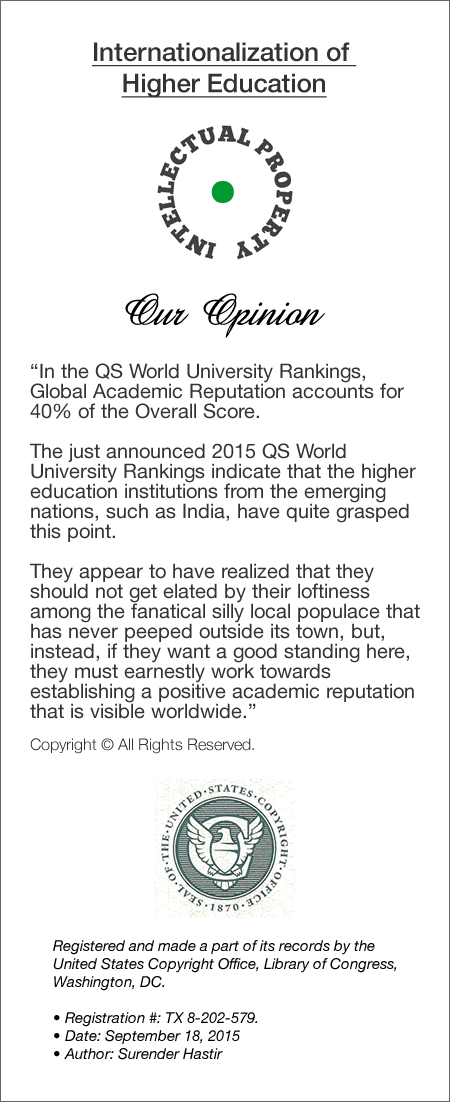
Edited & Posted by the Editor | 2:58 AM | View the original post

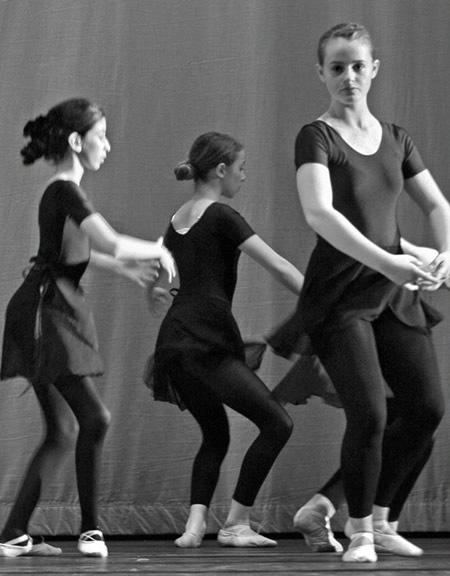
Photo: Dance Students in Paris, France. Image Credit & Copyright © Lieven Soete.
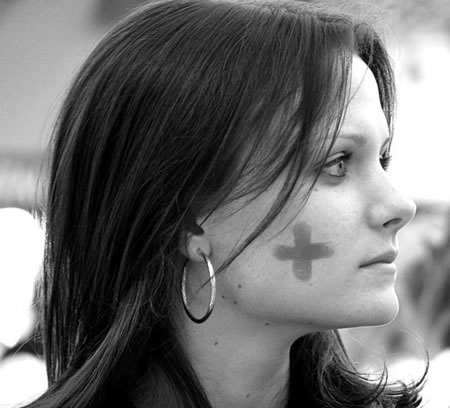
Photo: Nursing Student in Paris, France. Image Credit & Copyright © Manuel.

Photo: Art Student in Paris, France, copying an original work of art at the Louvre, one of the world’s largest museums. Image Credit & Copyright © Regan Wright.
LONDON, December 1, 2015 — Paris, the French capital, has again topped the QS Best Student Cities Rankings. It is followed by Melbourne, again second, and Tokyo in the third place.
London stands behind Sydney and ahead of Singapore, with the high cost of living in London being the primary reason it does not feature higher.
QS Best Student Cities 2016
Anne Hidalgo, Mayor of Paris, said: “Paris is proud to be ranked as the best world student city. Our youth reflect our greatest strength… We will continue to support students by offering them opportunities in an open, dynamic, and creative city.”
The United States is the most represented nation, with eleven placed cities. Boston (=13th) and New York (20th) are in the top twenty. It is followed by the United Kingdom (eight cities) and Australia (seven). The expanded rankings shine the spotlight on a series of new cities, such as Oslo and Monterrey.
The ranking are based on five key pillars:
To be included in the ranking, each city must have a population of over 2,50,000, and must be home to at least two ranked institutions in the QS World University Rankings. 122 cities in the world qualified on this basis, and 75 have been ranked.
The QS Best Student Cities rankings are designed to provide students and parents with a detailed comparison of the various merits of university cities worldwide.
|GlobalGiants.Com|
Edited & Posted by the Editor | 4:27 AM | View the original post
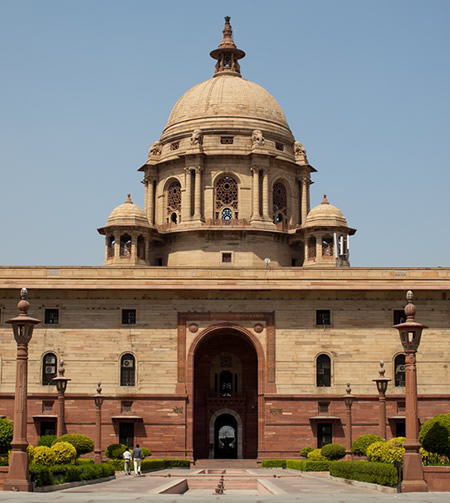
Photo: Entrance to Rashtrapati Bhavan (Presidential Palace), New Delhi, India. Picture Credit: Rob Towell.
New Delhi, India — November 6, 2015 — India’s first ever Visitor’s Conference concluded today at Rashtrapati Bhavan (Presidential Palace) with an interactive session between Industry and Academia. The President of India is Visitor of 114 central institutions of higher learning.
Participants in the conference included heads of all Central Universities and Indian Institutes of Technology’s.
During the conference, India’s Prime Minister, Narendra Modi, released a brochure “IMPRINT INDIA” and handed over the first copy to the President of India. Smriti Irani, India’s Human Resource Development Minister, was also present on the occasion.
• The President of India, Pranab Mukherjee said, “my constant refrain that we cannot aspire to be a world power without having a single world-class university, has found resonance amongst the institutions, who have now started looking at the international ranking processes in a more proactive and systematic manner.”
“For the first time,” President Mukherjee said, “two Indian institutions have found place in the top 200 positions in QS rankings.” “Indian Institute of Science Bangalore at 147th and Indian Institute of Technology Delhi at 179th place deserve full praise and compliments,” he added.
“Innovation is the currency of the future. Innovation converts research into wealth,” the President concluded. “Unless we recognize this reality and start working in a focused manner on creating a strong innovation culture in our country now, we will be left behind in the march to modernity.”
Source: President’s Secretariat, Rashtrapati Bhavan
|GlobalGiants.Com|
Edited & Posted by the Editor | 7:33 AM | View the original post
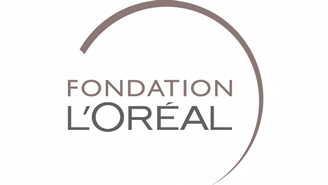

Photo: Doctor Vanessa D’Costa. Immunogenetics of Infectious Diseases. International Rising Talent 2015, North America (Canada). Image © Stephane Cardinale / People Avenue. Copyright © All rights reserved by L’Oreal-UNESCO For Women in Science.
Paris - The L’Oréal Foundation and UNESCO today revealed the five winners of the 2016 L’Oreal-UNESCO For Women in Science Awards in the field of Life Sciences. They will receive their awards at a ceremony to be held on 24 March 2016 in Paris.
Nominated by more than 2,600 leading scientists, 2016’s five laureates were then selected by an independent and international jury of 13 prominent scientists in the international scientific community. This year’s President of the Jury is Professor Elizabeth H. Blackburn, 2008 Laureate L’Oreal-UNESCO For Women in Science and 2009 joint winner of the Nobel Prize in Physiology or Medicine.
The jury announced the winners of the 2016 edition, five women scientists who will be awarded on 24 March 2016 at the Grand Amphitheatre of the Sorbonne in Paris. Each laureate will receive a Prize of €100,000 in recognition of her contribution to science.
THE LAUREATES
EUROPE
Professor Emmanuelle CHARPENTIER
Director, Max Planck Institute for Infection Biology, Berlin, Germany.
- Biological Sciences/Molecular Biology.
NORTH AMERICA
Professor Jennifer DOUDNA
Professor, Howard Hughes Medical Institute, Department of Molecular and Cell Biology, University of California, Berkeley, United States of America.
- Biological Sciences/Molecular Biology.
AFRICA AND THE ARAB STATES
Professor Quarraisha ABDOOL KARIM
Professor, CAPRISA, Nelson R Mandela School of Medicine, University of KwaZulu- Natal, South Africa.
- Medicine and Health Sciences/Women’s Health.
ASIA/PACIFIC
Professor Hualan CHEN
Professor, Harbin Veterinary Research Institute, Chinese Academy of Agricultural Sciences, Harbin, China.
- Biological Sciences/Veterinary Sciences.
LATIN AMERICA
Professor Andrea GAMARNIK
Professor, Molecular Virology Laboratory, Fundacion Instituto Leloir, CONICET, Buenos Aires, Argentina.
- Biological Sciences/Virology.
|GlobalGiants.Com|
Edited & Posted by the Editor | 7:53 AM | View the original post

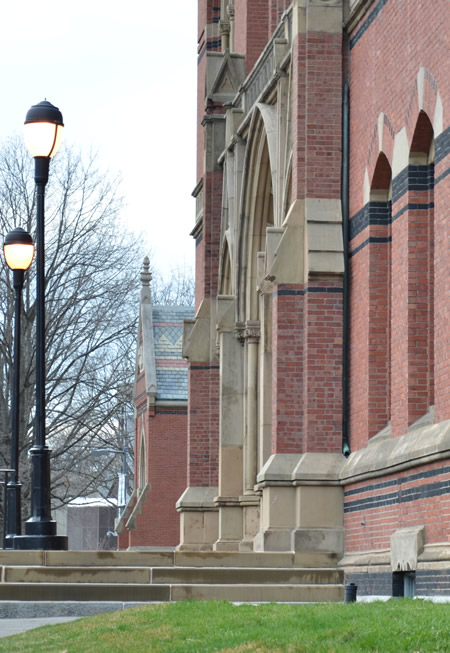
Photo: Entrance to the Memorial Hall, Harvard University. Photo Credit: Photographer © Michael Kappel.
WASHINGTON, D.C., Oct. 6, 2015 — U.S. News & World Report, publisher of Best Colleges for more than 30 years, today released the 2016 edition of the Best Global Universities. The rankings help students evaluate higher education options worldwide as well as by region, country and subject. U.S. universities remain the global leaders among research institutions, with Harvard University claiming No. 1, followed by the Massachusetts Institute of Technology at No. 2, the University of California—Berkeley at No. 3 and Stanford University at No. 4. U.K. universities take the next top spots with the University of Oxford at No. 5, followed by the University of Cambridge at No. 6.
The following countries have the most ranked institutions out of 750 schools on the overall Best Global Universities list:
“Students are increasingly looking outside their own countries for educational opportunities,” said Anita Narayan, managing editor of Education at U.S. News. “As international education continues to evolve, U.S. News will be at the forefront of the conversation - providing comparable information across global institutions and presenting it in bite-sized pieces for students and their families, just as we have done for three decades in the U.S.”
The second edition of the Best Global Universities rankings are more comprehensive, including rankings of the top 750 universities - up from 500 last year - spread out across 57 countries. U.S. News has published new university rankings of larger countries including India and Brazil, and smaller countries such as Belgium, bringing the total number of country-specific rankings up to 32. The 2016 edition also debuts a regional ranking for Africa, adding to the previous four regional rankings, and features a new subject ranking for arts and humanities, bringing up the total to 22 subject rankings.
These countries, listed in rank order, performed best in the following subject rankings:
The Best Global Universities methodology - which is based on data and metrics provided by Thomson Reuters InCitesTM research analytics solutions - weighs factors that measure a university’s global and regional reputation; academic research performance using bibliometric indicators; and school-level data on faculty and Ph.D. graduates. Each subject ranking has its own, similar methodology.
“We have designed the rankings to be a starting point to help students and their families identify institutions that speak to their specific needs, whether they are planning on staying close to home or traveling abroad for college - or whether they are seeking a specific academic degree,” said Robert Morse, chief data strategist at U.S. News.
U.S. News 2016 Best Global Universities Rankings
Overall Best Global Universities
Africa
Asia
Australia/New Zealand
Europe
Latin America
Country Specific
India
|GlobalGiants.Com|
Edited & Posted by the Editor | 1:54 PM | View the original post
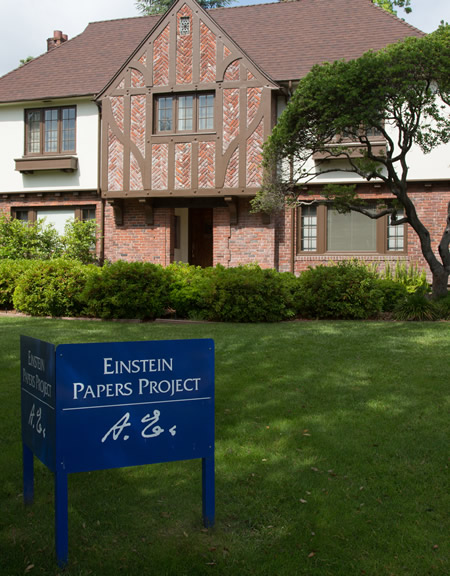
Photo: A house situated inside the California Institute of Technology Campus. Image Credit: Jim Fruchterman.
According to Times Higher Education, the world dominance of U.S. universities has further waned in its World University Rankings 2015-2016 announced today. This is despite the fact that the country boasts almost a fifth of institutions in the table.
A total of 147 US universities feature in the top 800 - the largest THE rankings to date - including the California Institute of Technology, which claims pole position for the fifth consecutive year.
Phil Baty, THE rankings editor, said that the US’ movement is to some degree owing to significant improvements to the rankings’ data sources this year, with “improved coverage of research not published in English and a better geographical spread of responses to our academic reputation survey”.
However, he added that it also demonstrates that the US’ leading status as the world’s top magnet for academic and student talent “cannot be taken for granted”, citing figures that show that 47 states in the US have implemented higher education funding cuts since the global recession in 2008.
Simon Marginson, professor of international higher education at the UCL Institute of Education, said that US research is “not declining in the absolute sense”, but rather “other countries are improving and crowding into the top 200 space”.
One of these competitor nations is the UK, which has improved its standing this year. A total of 78 UK institutions feature in the top 800, with 34 of these sitting in the first quarter, up from 29 last year.
Other countries in Europe have also performed well. Germany has 20 universities in the top 200, a rise of eight since last year, while the Netherlands has 12 in the first quarter, up from 11. Meanwhile, Switzerland’s ETH Zurich is the first non-Anglo-American institution to make the top 10 for a decade.
Overall, Europe has 345 universities in the world top 800, meaning its institutions comprise more than two-fifths of the table.
Institutions from 70 countries, 29 more than last year, feature in this year’s rankings, with several countries including Indonesia, Bangladesh and Kenya being represented for the first time.
The National University of Singapore is the number one institution in Asia - the first time the city-state has claimed the continent’s top spot in the rankings’ 12-year history.
NUS is in 26th position overall in the rankings, with the next highest Asian institutions - China’s Peking University and Japan’s University of Tokyo - taking 42nd and 43rd place respectively.
“Tough times for Japan and disappointment for South Korea mean that leading Asian nations’ grip on the higher ranks of the THE World University Rankings is loose,” said Phil Baty, THE rankings editor.
“Many institutions, particularly in East Asia, have been focusing heavily on attaining world-class status, backed with funding and powerful political will. But this ranking demonstrates how difficult a task this is, as universities right across the world continue to improve.”
TIMES HIGHER EDUCATION WORLD UNIVERSITY RANKINGS 2015-2016: TOP 10
RANK — INSTITUTION — COUNTRY
TIMES HIGHER EDUCATION WORLD UNIVERSITY RANKINGS 2015-2016: INSTITUTIONS FROM INDIA
RANK — INSTITUTION
|GlobalGiants.Com|
Edited & Posted by the Editor | 5:51 PM | View the original post


Photo: M.I.T. (Massachusetts Institute of Technology) Campus, Cambridge, Massachusetts, USA. Image Credit: Taaalia.
LONDON — The QS World University Rankings 2015/16 announced today confirm Massachusetts Institute of Technology (MIT) as the world’s top university followed by Harvard (2nd), Cambridge and Stanford (3rd=), while ETH Zurich (9th) breaks into the top 10.
Singapore’s leading universities gain substantially, each making the top 15 for the first time. National University of Singapore (12th) is the leading Asian institution and Nanyang Technological University (13th) is right behind them, taking a quantum leap.
Australian National University (19th) also returns to the top 20. China’s Tsinghua University (25th) is Asia’s third best university, leading a strong Chinese cohort.
76,798 academics and 44,226 employers contributed to the rankings through the QS global surveys, the largest of their kind and QS analyzed 11.1 million research papers - indexed by Elsevier’s Scopus database. 3,539 institutions were considered for inclusion and 891 ranked.
A modified approach to “citations per faculty”, a measure of research impact, has delivered fairer evaluations for universities with a strong profile in areas with lower research activity, such as arts, humanities and social sciences. LSE (35th) and other leading institutions traditionally overshadowed by research-intensive universities, see their excellence more equitably recognized.
Ben Sowter, QS head of research says: “These latest results reveal more diversity than ever in the distribution of world-class universities at the highest levels. We’re providing prospective students with the richest picture yet.”
QS WORLD UNIVERSITY RANKINGS 2015/2016 — TOP TWENTY
RANK — INSTITUTION — COUNTRY
The rankings include universities from 82 countries. Thirty-four countries feature in the Top 200. The United States dominates with 49 institutions, ahead of the UK (30), Netherlands (12), Germany (11), Canada, Australia, and Japan (8), China (7), France, Sweden and Hong Kong (5).
Following institutions from India have found a place among the top 800:
RANK — OVERALL SCORE — INSTITUTION
RANK — INSTITUTION
Meanwhile, the President of India, Pranab Mukherjee, has congratulated the Indian Institute of Science-Bangalore (IISc-B) and the Indian Institute of Technology-Delhi (IIT-D) for figuring in the list of top 200 institutions of the QS World University Rankings.
“A high rank not only boosts the morale of the academic community but also opens greater avenues of growth and placement for students,” the president said. View the Official Press Release.
|GlobalGiants.Com|

“In the QS World University Rankings, Global Academic Reputation accounts for 40% of the Overall Score.
The just announced 2015 QS World University Rankings indicate that the higher education institutions from the emerging nations, such as India, have quite grasped this point.
They appear to have realized that they should not get elated by their loftiness among the fanatical silly local populace that has never peeped outside its town, but, instead, if they want a good standing here, they must earnestly work towards establishing a positive academic reputation that is visible worldwide.”
© GlobalGiants.Com
Edited & Posted by the Editor | 9:23 AM | View the original post


Photo: Princeton University Campus. Image provided by & copyright © Princeton University Office of Communications.
WASHINGTON, Sept. 9, 2015 — U.S. News & World Report today released the 2016 edition of Best Colleges to help domestic and international students compare the academic quality of U.S.-based schools. The new edition includes data on nearly 1,800 colleges and features rankings of 1,376 schools.
• Princeton University remains No. 1 in the Best National Universities category, while Williams College once again tops the Best National Liberal Arts Colleges list. The University of California—Berkeley is the No. 1 Top Public School among National Universities.
The U.S. News rankings focus on academic excellence, with schools ranked on up to 16 measures of academic quality. The rankings emphasize outcomes, with graduation and retention rates carrying the most weight in the methodology at 30 percent. The top schools all have high six-year graduation rates and strong freshman retention rates:
“Taking into account how well a school supports its students from freshman year through graduation is important,” said Brian Kelly, editor and chief content officer at U.S. News. “To find the best fit, students should consider a range of factors, from financial aid offerings and location to campus size and majors. The process can be overwhelming, but our rankings and advice content are a great place to start.”
The 2016 edition debuts a Most Innovative Schools list, featuring institutions making inventive improvements in terms of campus life, curriculum, facilities, faculty, students or technology.
“We are the only organization that has been ranking schools for over three decades,” said Robert Morse, chief data strategist at U.S. News. “Over that time we have improved our information and sharpened our methodology’s focus, with one of the biggest updates being a greater consideration of output measurements.”
The college ranking categories are based upon the 2010 Carnegie Foundation for the Advancement of Teaching classifications. The Carnegie classification system has been used by U.S. News since the first Best Colleges rankings in 1983, because they are accepted as the basis for classifying schools by most higher education researchers.
U.S. News 2016 Best Colleges Rankings
Best National Universities — Top Ten
Best National Liberal Arts Colleges — Top Ten
Top Public Schools
National Universities — Top Five
Liberal Arts Colleges —Â Top Five
|GlobalGiants.Com|
Edited & Posted by the Editor | 8:46 AM | View the original post


Photo: Students from Tsinghua University (Beijing, China) are using the IBM-developed SuperVessel cloud service to develop cloud and emerging technology applications. These students are part of a growing community of developers contributing to the OpenPOWER ecosystem worldwide. (Credit: IBM).

Photo: Project managers in IBM’s Costa Rica Delivery Center talk with global clients about implementing solutions in the areas of cloud, security, data storage and analytics to optimize their IT infrastructure. Forrester Research named IBM the leading supplier in global infrastructure outsourcing, based on a survey of 13 top firms, noting IBM’s vision for cloud and the rise of hybrid cloud as a priority for clients. (Credit: IBM).
ARMONK, N.Y - 22 Jul 2015: IBM is introducing a new commitment to enable the next generation of developers with the Academic Initiative for Cloud, aimed to mentor and energize them to innovate using IBM Cloud technologies. The new program will create cloud development curricula using Bluemix, IBM’s platform-as-a-service, in over 200 universities, reaching more than 20,000 students in 36 countries.
“Putting Bluemix in the hands of today’s and tomorrow’s innovators creates the opportunity to foster a new generation of talent in cloud application development,” said IBM General Manager for Cloud Ecosystem and Developers, Sandy Carter. “Our commitment to provide deep cloud expertise to programs aimed at future cloud developers from academics to professionals is necessary to sustain the growth our industry forecasts.”
• Introducing the Academic Initiative for Cloud
IBM’s new Academic Initiative for Cloud will introduce students to the latest cloud technologies and solutions as they build the transferrable skills needed to launch their own businesses or become industry leaders in the workforce. This new program continues IBM’s leadership and commitment to closing the skills gap between higher education curricula and workforce needs, which already includes Big Data Analytics and Cognitive Computing academic programs.
Starting this fall, universities around the world will commence more than 250 courses and programs that will utilize educational materials, technologies and methodologies from IBM with a focus on using Bluemix in a variety of courses ranging from computer science, information technology, analytics and data science to mobile and entrepreneurship. The list of over 210 marquee institutions includes:
The use of Bluemix in the classroom will allow faculty to extend their teaching beyond theory and into practice.
“Leaders in business and higher education must come together to foster a new generation of digital-savvy talent,” said Kevin Werbach, a professor and expert on gamification at the Wharton School of the University of Pennsylvania. “It’s great that IBM is so committed to connecting with top universities like ours, and to giving students and faculty exposure to the latest cloud technologies and business concepts. This experience will help prepare our students as they enter the marketplace.”
Additionally, IBM is launching a new Student Developer Community that helps students get started on their journey of cloud education, and provides quick access to learning resources and information on how students can join Bluemix U, where students can showcase their accomplishments and the impact of their real-world projects.
• Supporting Girls Who Code and ReBoot Accelerator to Diversify the Tech Talent Pipeline
Diversity drives innovation. With only 14% of computer science graduates being women today, down from 37% in 1984, IBM is committed to innovation-driven cloud development by supporting programs that empower women in technology and address the lack of women in technology professions.
As such, IBM is working with Girls Who Code to introduce the next generation of women developers to cloud innovation by hosting a class of female high-school students in New York City for a seven-week summer immersion program. For 2016, IBM has committed to further expand its relationship with the organization to support additional programs in San Francisco, Los Angeles and Austin, alongside continued support for the New York City summer immersion program.
IBM is also announcing a new collaboration with GSVlabs on the ReBoot Accelerator for Women, a program designed to help women become current, connected, and confident as they return to work after a multi-year sabbatical. IBM will host several instructional sessions that will focus on cloud development using Bluemix, aimed at demystifying coding and making it more approachable. IBM will also be providing mentorship and assistance with job placement strategies in hopes of attracting more women back to the workplace, including at IBM.
IBM is also working to create programs for developers to help them transform industry and enterprise.
|GlobalGiants.Com|
“The value of an idea lies in the using of it.”
— Thomas A. Edison.
“When I have fully decided that a result is worth getting I go ahead of it and make trial after trial until it comes.”
— Thomas A. Edison.
“I never did anything by accident, nor did any of my inventions come by accident; they came by work.”
— Thomas A. Edison.
Edited & Posted by the Editor | 5:20 AM | View the original post


Photo: An ivy-covered building at the University of Cape Town (UCT), South Africa. UCT was established in 1829. Image credit © Danie van der Merwe.
The QS University Rankings: BRICS compares the Top 200 institutions in Brazil, Russia, India, China and South Africa.
Released today, the 2015 edition of the QS University Rankings: BRICS reflects the increasingly strong global presence of leading Chinese universities - with the top three spots going to Tsinghua University, Peking University and Fudan University.
While all five BRICS countries are represented within the top 20, China’s dominance is clear throughout the ranking. Driven by strong performance in the two global reputation surveys of academics and employers, Chinese universities take seven of the top 10 spots and almost half of the top 50. With 53 institutions in the top 200, Russia is second only to China, which has 67 universities featured. Yet only seven Russian institutions make the top 50, compared to China’s 21, Brazil’s 10, and India’s 9.
Russia’s leading entrant, Lomonosov Moscow State University, falls one position this year, but retains a highly respectable fourth place. India’s top representative, the Indian Institute of Science Bangalore, follows immediately behind in fifth. Brazil makes its first appearance with the Universidade de Sao Paulo in ninth place, while South Africa’s leader is the University of Cape Town in 14th - both having fallen slightly since last year.
Now in its third annual edition, the QS University Rankings: BRICS was developed to track the relative progress of leading universities in the five fast-developing BRICS countries - all of which have made investment in higher education and research high national priorities.
As a recent OECD (Organisation for Economic Co-operation and Development) report showed, China now spends more on research and development than any country other than the US. It is forecast to overtake the entire European Union and the US on this measure by the end of the current decade.
Meanwhile recent years have seen the Russian government step up efforts to internationalize its higher education, with a focus on gaining ground in the global rankings. More than 10 billion roubles (US$300m) has been committed in grants for leading Russian universities, with the “Council on Global Competitiveness Enhancement of Russian Universities” established to monitor progress and guide the project.
India likewise has its eye on the international stage, with the government’s “brain gain” policy aspiring to establish 14 world-class universities.
QS UNIVERSITY RANKINGS: BRICS 2015 — TOP 20
RANK — INSTITUTION — COUNTRY
QS UNIVERSITY RANKINGS: BRICS 2015 — INDIA
BRICS RANK — INSTITUTION
The QS University Rankings: BRICS is based on eight key performance indicators that relate to global reputation, internationalization, academic staff levels, research production, and impact. This year more than 500 universities in the BRICS countries were considered for inclusion, with the top 200 published.
|GlobalGiants.Com|
ADDENDUM
• Press Note issued by Rashtrapati Bhavan (Presidential Mansion), New Delhi, India —
PRESIDENT OF INDIA EXPRESSES HAPPINESS OVER IISC COMING IN FIFTH PLACE AND 31 INDIAN INSTITUTIONS FIGURING IN TOP 200 IN THE QS BRICS UNIVERSITIES RANKING 2015.
Edited & Posted by the Editor | 5:52 AM | View the original post
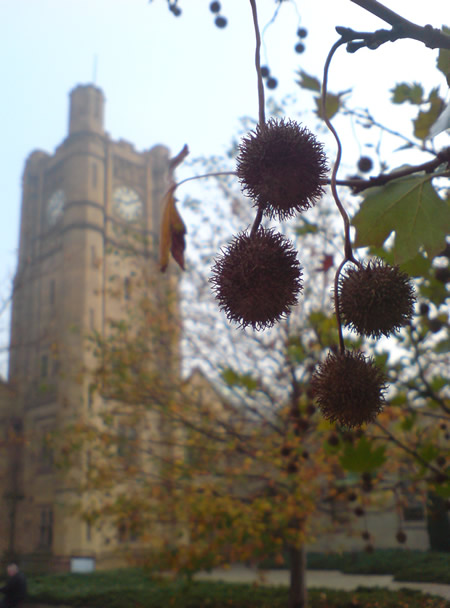
Photo: Clock at University of Melbourne Campus. Picture Credit & copyright © Cobi Smith.
Times Higher Education has announced that its World Academic Summit would take place at the University of Melbourne, Australia, between 30 September and 2 October 2015 and would bring together world leaders from universities, government, and industry to explore the future of world class universities.
The summit will host the official worldwide launch of the 2015-16 Times Higher Education World University Rankings on 1 October, and will have sessions looking at the development of future Nobel laureates, the changing trends in international student mobility, the civic role of globally-focussed universities, international research collaboration, the development of metrics & indicators of research success, and the teaching innovations required to nurture the future generation of global leaders.
Nicolas Dirks, the chancellor of the University of California, Berkeley, will be one of several high profile keynote speakers. Berkeley is consistently ranked in the top ten universities in the world and is one of the six global university “super brands” identified by the THE World Reputation Rankings. His presentation will encompass Berkeley’s ambitious plans for a new “global campus” in California, and will address the subject: “The future of the world class university”.
Sarah Springman, the rector of Switzerland’s ETH Zurich, the world’s highest ranked university outside of the US and UK, will also take part in the summit. She will be joined by Ed Byrne, the president of one of the world’s fastest rising universities, King’s College London, Kap-Young Jeong, the president of South Korea’s Yonsei University as well as Simon Gaskell, principal of Queen Mary University of London and many others.
Brian Schmidt, winner of the 2011 Nobel prize for physics and an astronomer at the Research School of Astronomy and Astrophysics, who was this week confirmed as the next vice chancellor of the Australian National University, will also take part.
Phil Baty, editor of the THE’s portfolio of global rankings, will formally launch the 2015-16 results of the THE World University Rankings. According to Mr. Baty, “The Times Higher Education World Academic Summit brings together a truly exceptional group of people from all across the world. There is no better annual gathering for a select group of university leaders from all over the world to unite behind the common goals of top global universities - nurturing the next generation of world leaders, fostering intercultural understanding, pushing forward the boundaries of human knowledge and transferring that knowledge from the laboratories and classrooms to the wider world.”
|GlobalGiants.Com|
Edited & Posted by the Editor | 12:09 AM | View the original post

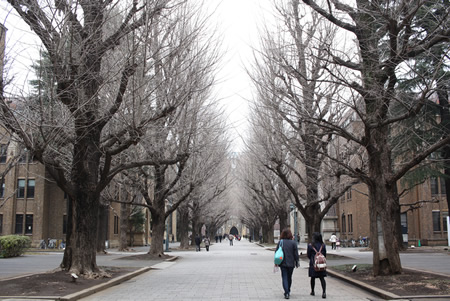
Photo: On the day before the entrance exam. The University of Tokyo, Japan. Image Credit: Yasuhiro HATA.
The QS University Rankings: Asia 2015, released today, reveals strong progress for leading universities in China. The nation accounts for a quarter of Asia’s top 100 universities, and of these 25 leading Chinese universities, 16 have this year improved their positions in the ranking.
These gains have largely been driven by improvements in research productivity, reflecting sustained high levels of public and private investment, though this has yet to fully translate into comparably high levels of research impact, assessed by calculating citations per paper.
China’s highest-ranked institution, Peking University, climbs one place this year to reach 7th place. It’s closely followed by Tsinghua University, which has gained three positions to rank 11th.
Meanwhile the National University of Singapore (NUS) retains the overall top spot in the ranking, with fellow Singapore institution Nanyang Technological University (NTU) climbing from 7th to 4th. Hong Kong and South Korea also retain a strong presence among Asia’s higher education elite, claiming the remaining top-10 positions.
Published annually since 2009, the QS University Rankings: Asia highlights the top 300 universities in Asia, based on a methodology designed to reflect regional challenges and priorities. After China, which has 74 entries overall, Japan remains the most-represented country in the ranking, with 68 Japanese institutions featured. Next is South Korea, taking 45 places, followed by Taiwan (28), Malaysia (21) and India (17).
The other Asian countries featured in the top 300 are: Thailand (11 universities), Pakistan (10), Hong Kong (7), Indonesia (7), Philippines (4), Singapore, Vietnam and Bangladesh (2), Sri Lanka, Brunei and Macau (1).
Click to View the Rankings:
• QS Asia University Rankings 2015 — TOP TWENTY
• QS Asia University Rankings 2015 — INDIA
• QS Asia University Rankings 2015 — PAKISTAN
• QS Asia University Rankings 2015 — BANGLADESH
|GlobalGiants.Com|
Edited & Posted by the Editor | 9:29 AM | View the original post
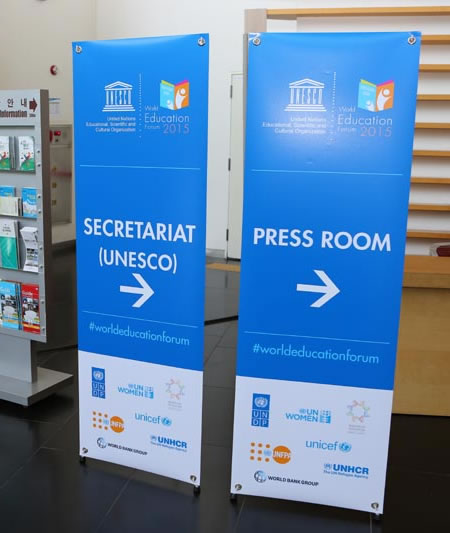
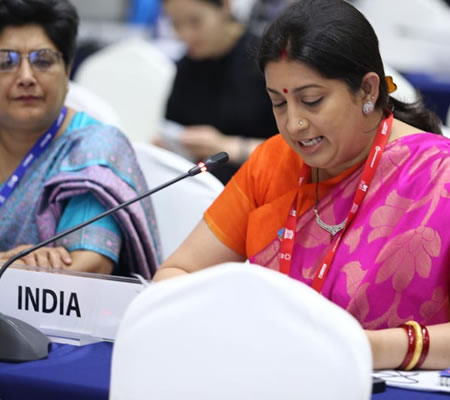
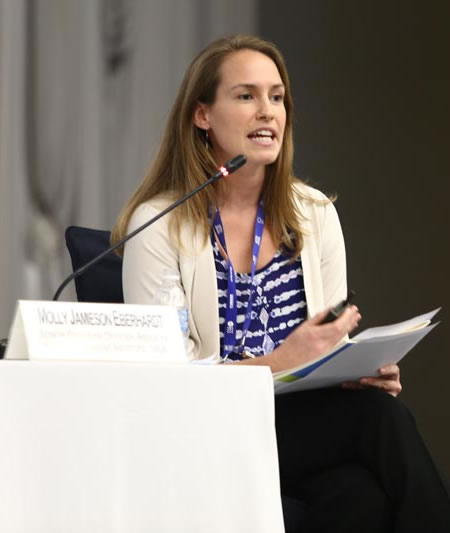
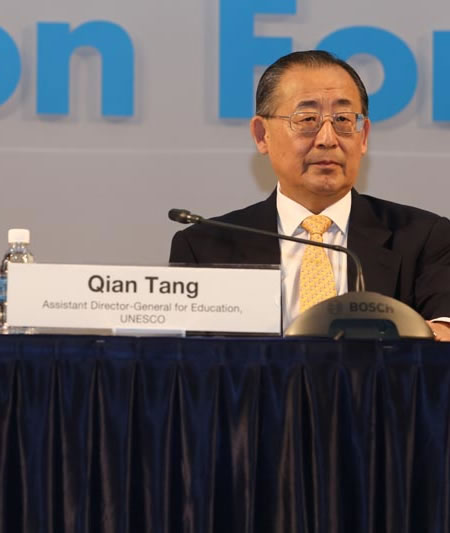
Photos: World Education Forum 2015, Incheon, Republic of Korea. Images provided by and copyright © UNESCO.
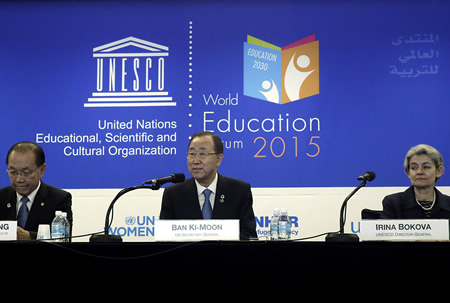
Photo: Opening of World Education Forum 2015, Seoul. UN Secretary-General Ban Ki-moon centre, at the opening of the World Education Forum 2015, in Seoul. He is flanked by Hwang Woo-yea (left), Deputy Prime Minister and Minister of Education of the Republic of Korea; and Irina Bokova, Director-General of the UN Educational, Scientific and Cultural Organization (UNESCO). 19 May 2015. Seoul, Republic of Korea. UN Photo/Evan Schneider.
Incheon, Republic of Korea, 21 May 2015 — A transformative vision for education over the next 15 years has been adopted at the World Education Forum, which concluded today in Incheon, Republic of Korea. The Incheon Declaration was welcomed by the global education community, including government ministers from more than 100 countries, non-governmental organizations and youth groups. It encourages countries to provide inclusive, equitable, quality education and life-long learning opportunities for all. The Declaration will underpin the education targets in the Sustainable Development Goals that will be ratified at the United Nations in September.
“This Declaration is a huge step forward,” stated the Director-General of UNESCO, Irina Bokova. “It reflects our determination to ensure that all children and young people gain the knowledge and skills they need to live in dignity, to reach their potential and contribute to their societies as responsible global citizens. It encourages governments to provide learning opportunities through life, so that people can continue to grow and develop. It affirms that education is the key to global peace and sustainable development.”
The Incheon Declaration will be implemented through the Education 2030 Framework for Action, a roadmap for governments to be adopted by the end of the year. It will provide guidance on effective legal and policy frameworks for education, based on the principles of accountability, transparency and participatory governance.
|GlobalGiants.Com|
“Educating the mind without educating the heart is no education at all.”
— Aristotle.
Edited & Posted by the Editor | 1:08 PM | View the original post
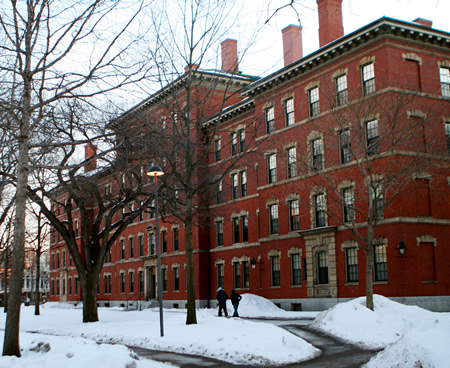
Photo: A building at Harvard University. Photo Credit: Hong Duong.
London — Times Higher Education (THE) has announced its World Reputation Rankings 2015 that determines the 100 most renowned higher education institutions in the world.
For the fifth consecutive year, the rankings highlight an elite group of six US and UK “super-brands” that hold a significant lead over the rest. Although the order has changed over the years, the institutions in the top six have remained constant: Harvard University, Cambridge, Oxford, the Massachusetts Institute of Technology, Stanford University and the University of California, Berkeley.
“What we are finding year on year is that universities in this group of six tend to stand out well above the seventh and eighth placed institutions,” said THE rankings editor Phil Baty. “They seem to be in a super-league all of their own.”
Germany remains the best-represented nation after the US and the UK, with six top 100 universities (the same as last year). Its neighbour France now boasts five institutions in the table (all of them based in Paris), up from two last year.
Asia’s best performer, the University of Tokyo, slipped one place to 12th position. Meanwhile, China’s top institution, Tsinghua University, climbed 10 places to 26th, and Peking University leaped from 41st to 32nd place.
THE partnered with Elsevier to disseminate the Academic Reputation Survey on which the results are based. Questionnaires, which asked participants to nominate up to 10 of the best institutions in their field of expertise, were completed by some 10,000 academics selected to give a statistically representative sample of global scholars.
World’s Most Prestigious Universities
Top 50
Rank - Institution - Location - Overall Score
51 to 60
61 to 70
71 to 80
81 to 90
91 to 100
|GlobalGiants.Com|
Edited & Posted by the Editor | 9:43 AM | View the original post
 |
 |
